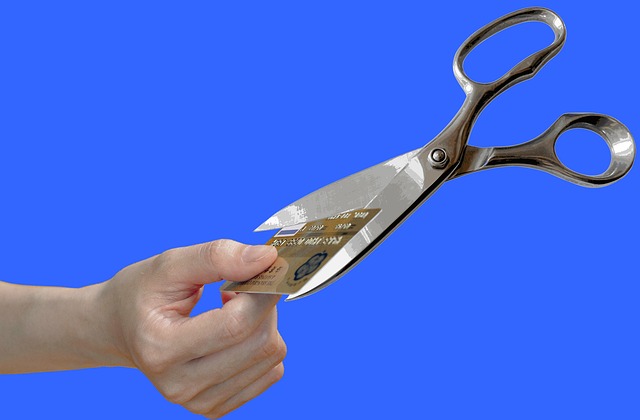Cashback Credit Cards in the UK: How They Work
Cashback credit cards offer UK consumers a way to earn money back on their everyday spending. These financial products provide a percentage of your purchases back as rewards, effectively giving you a discount on everything you buy. Understanding how these cards work, their different reward structures, and potential pitfalls is essential before adding one to your wallet.

Cashback credit cards in the UK have become increasingly popular as consumers seek ways to make their spending work harder for them. These cards offer a percentage of your spending back as a reward, essentially giving you a discount on purchases you would make anyway. While the concept is straightforward, the details of how these cards operate, the types of cashback available, and important considerations can vary significantly between providers. This guide explores everything you need to know about cashback credit cards in the UK market.
What is a cashback credit card and how does it work?
A cashback credit card functions like a standard credit card but with an added benefit: you receive a percentage of your spending back as a reward. When you make purchases with your cashback card, the card provider tracks your eligible spending and calculates the cashback amount based on the card’s specific reward rate. This cashback typically appears as a credit on your statement or accumulates in a rewards account that you can redeem periodically.
The cashback percentage usually ranges from 0.25% to 5%, depending on the card and spending category. For example, a card offering 1% cashback would give you £1 back for every £100 spent. Some cards offer tiered rates, where you might earn higher percentages after reaching certain spending thresholds or on specific categories of purchases.
Types of cashback offers available in the UK
UK cashback credit cards come in several varieties, each with distinct reward structures. Flat-rate cashback cards offer the same percentage back on all purchases, providing simplicity and consistency. These typically range from 0.5% to 1.5% cashback on all spending.
Tiered cashback cards offer different rates depending on how much you spend. For instance, you might earn 0.5% on your first £5,000 of annual spending, then 1% thereafter. Category-specific cashback cards provide enhanced rewards for particular types of spending, such as supermarket shopping, fuel purchases, or travel expenses. These might offer 3% back on groceries but only 0.5% on everything else.
Some providers also offer introductory cashback bonuses, where you can earn higher rates (sometimes up to 5%) for a limited period after opening the account, typically the first three months.
Benefits of using a cashback credit card
The primary advantage of cashback credit cards is earning money back on purchases you would make anyway. This effectively reduces the cost of your everyday spending without requiring changes to your shopping habits. For frequent spenders, these rewards can accumulate to significant amounts over a year.
Cashback cards often come with additional benefits similar to standard credit cards, including purchase protection, extended warranties on eligible items, and travel insurance. Some premium cashback cards may offer enhanced travel benefits, concierge services, or access to airport lounges.
Using a cashback card responsibly can also help build your credit score, as regular spending and timely repayments demonstrate financial reliability to potential lenders. Additionally, credit card purchases between £100 and £30,000 are protected under Section 75 of the Consumer Credit Act, providing extra security for your shopping.
Important fees and conditions to consider
Despite their benefits, cashback credit cards often come with terms and conditions that can significantly impact their value. Annual fees are common on cards with higher cashback rates, typically ranging from £25 to £150. You’ll need to calculate whether your expected cashback will exceed this fee to determine if the card offers genuine value.
Interest rates on cashback cards tend to be higher than standard credit cards, often between 20% and 30% APR. This means carrying a balance can quickly erase any cashback benefits. Most cashback cards also impose minimum and maximum reward limits. You might need to spend a certain amount annually to receive any cashback, while upper limits cap how much you can earn.
Some cards exclude certain transaction types from earning cashback, such as balance transfers, cash advances, gambling transactions, or payments to financial institutions. Additionally, many providers set expiration dates on cashback rewards, typically requiring redemption within 1-2 years.
Tips for choosing the right cashback credit card
When selecting a cashback credit card, analyze your spending patterns to identify where you spend the most money. If a significant portion of your budget goes toward groceries or fuel, a category-specific card might offer better returns than a flat-rate option. Calculate your potential annual cashback based on your typical spending and subtract any annual fee to determine the net benefit.
Pay attention to introductory offers, which can significantly boost your initial rewards, but don’t be swayed by short-term perks if the long-term value doesn’t align with your needs. Check redemption options—some cards automatically credit your statement, while others require manual redemption through a portal or have minimum redemption thresholds.
Comparing popular UK cashback credit cards
The UK market offers several cashback credit card options with varying features and benefits. Understanding how they compare can help you make an informed decision about which might be right for your spending habits.
| Card Provider | Cashback Rate | Annual Fee | Notable Features |
|---|---|---|---|
| American Express Platinum Cashback | 5% intro (up to £125) then 0.75%-1.25% | £25 | Higher rate after £10,000 annual spend |
| Santander All in One | 0.5% uncapped | £3 monthly | Includes 0% on purchases for 20 months |
| Barclaycard Rewards | 0.25% uncapped | £0 | No foreign transaction fees |
| Chase UK Debit Card | 1% for first year | £0 | Actually a debit card with cashback |
| Amazon Platinum Mastercard | 0.5% standard, 1.5% at Amazon | £0 | Amazon-specific benefits |
Prices, rates, or cost estimates mentioned in this article are based on the latest available information but may change over time. Independent research is advised before making financial decisions.
Cashback credit cards can be valuable financial tools when used strategically. By understanding how they work, comparing available options, and aligning your choice with your spending patterns, you can maximize your rewards while avoiding potential pitfalls. Remember that the best cashback card is one that complements your existing spending habits rather than encouraging unnecessary purchases simply to earn rewards.




